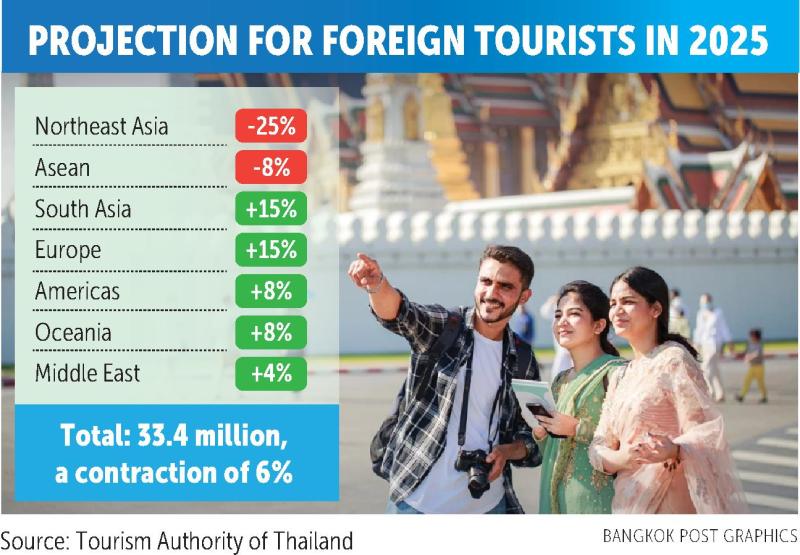Increasing competition from other countries in the region a key factor, says TAT

A tourist wears traditional Thai attire during her visit to Wat Arun, also known as the Temple of Dawn, on July 11, 2025. (Photo: Pattarapong Chatpattarasill)
The Tourism Authority of Thailand (TAT) expects the country to welcome 33.4 million foreign visitors this year, a 6% year-on-year decline attributed to contractions from the Southeast and East Asian markets.
The agency forecasts Thailand will welcome 2.62 million travellers in October, 3.07 million in November and 3.63 million in December.
It predicts that arrivals from East Asia will shrink by 25%, mainly due to a steep fall-off from China, while Southeast Asian arrivals will be down by 8%.
Within East Asia, TAT notes declines in travellers from China, Taiwan, Hong Kong and South Korea, while Japanese arrivals remain resilient, said Rung Kanjanaviroj, executive director of planning at the TAT.
In Southeast Asia, fewer Malaysians have been visiting the country. The authority is monitoring this trend and believes travellers may be shifting to alternative destinations.
Vietnam in particular has been experiencing a tourism boom this year. In the first eight months of 2025, the country recorded nearly 14 million foreign tourist arrivals, an increase of 21.7% from a year earlier.
The good news, says the TAT, is that arrivals from Europe are expected to grow by 15% this year, South Asia, the Americas and Oceania by 8% each, and the Middle East by 4%.

As the global economy remains challenging, increasing tourism spending per traveller will be difficult, said Ms Rung.
Moreover, Thailand faces intense tourism competition from other countries in the region.
She said tourists are also concerned about travel safety and the ongoing border dispute with Cambodia.
Next year, the TAT expects Thailand will face stronger competition from China, where improved infrastructure makes travel easier for independent travellers, and Vietnam as it develops new man-made attractions at competitive prices.
Strong baht a factor
Kriengkrai Thiennukul, chairman of the Federation of Thai Industries (FTI), said the baht appreciating to its highest level against the US dollar in four years has not only harmed Thailand’s export industries, but also affected the tourism sector.
The stronger baht has made Thailand less competitive compared with other destinations, as Japan’s weak yen and Vietnam’s depreciating dong both favour foreign travellers, he said.
Developing man-made attractions is also important, he noted, as China has successfully built such destinations and integrated them with existing points of interest to create comprehensive travel routes.
Mr Kriengkrai encouraged Thailand’s tourism industry to embrace sustainable tourism.
If Thailand can tap new markets, the country could eventually attract 70 million foreign visitors a year and tourism revenue could contribute more than 20% of the country’s GDP, he said.
